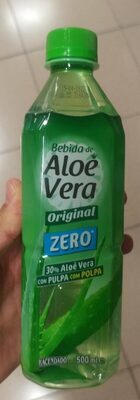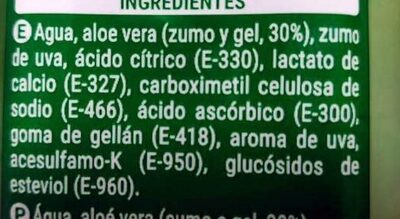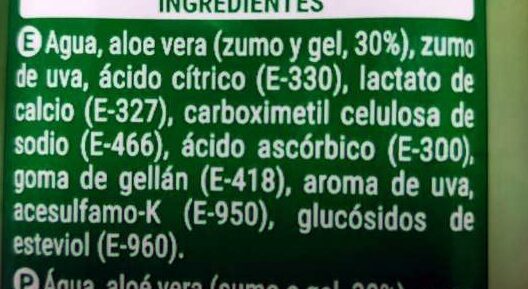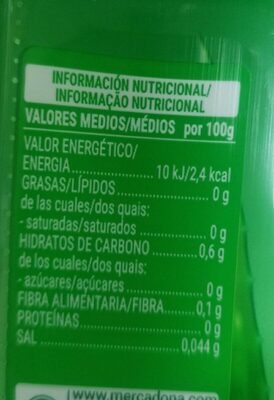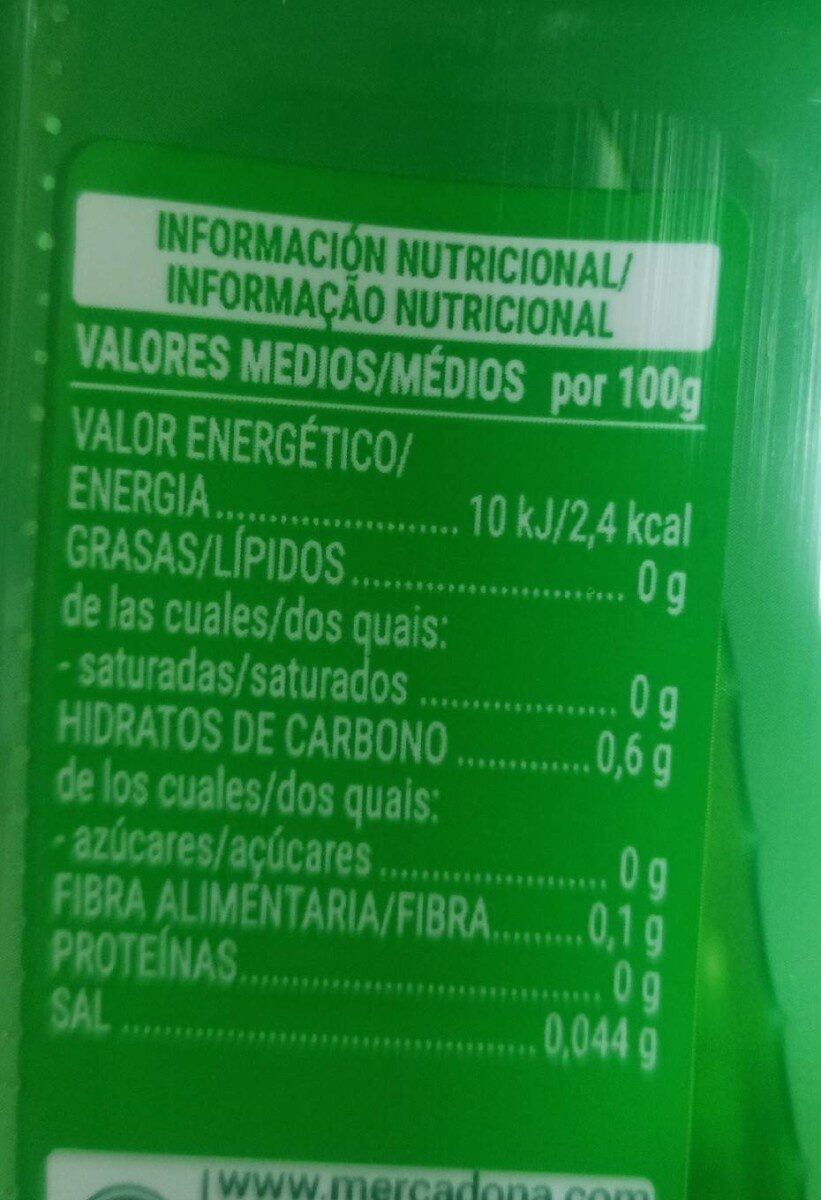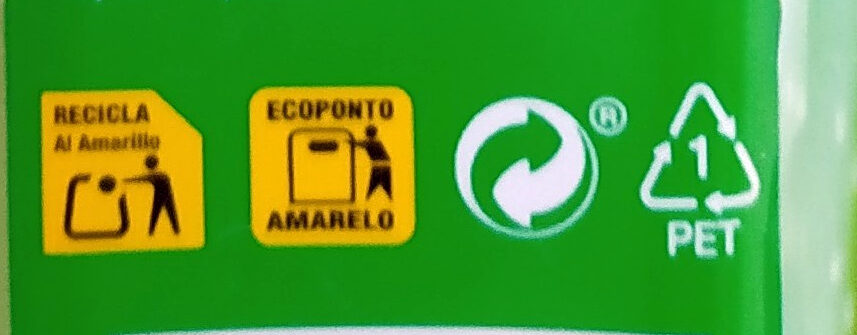Bebida de Aloe Vera - Hacendado - 500 ml
This product page is not complete. You can help to complete it by editing it and adding more data from the photos we have, or by taking more photos using the app for Android or iPhone/iPad. Thank you!
×
Barcode: 8480000285461 (EAN / EAN-13)
Common name: Bebida de aloe vera con edulcorantes
Quantity: 500 ml
Packaging: Plastic, Pet-polyethylene-terephthalate, es:Green dot, es:Plástico pet
Brands: Hacendado
Categories: Plant-based foods and beverages, Beverages, Plant-based beverages, Fruit-based beverages, Artificially sweetened beverages, Non-alcoholic beverages, Aloe Vera drinks, Sweetened beverages
Labels, certifications, awards:
Low or no sugar, Green Dot, No sugar, With sweeteners
Manufacturing or processing places: Taiwan
Stores: Mercadona
Countries where sold: Spain
Matching with your preferences
Report a problem
Data sources
Product added on by kiliweb
Last edit of product page on by roboto-app.
Product page also edited by alia, brownieana9, elcoco, fomare47-gmail-com, musarana, openfoodfacts-contributors, packbot, yuka.CaJEHtG6O8kKE_fY9NIahBORStjgCcMIBkUOoQ, yuka.DOt5ZueCFccaLvrV19sy-jWrLd7pOfNrR3oMog, yuka.DqAbHufXMdR-FfCOj4M1_Si7Jt-8Kd8BH1QcoQ, yuka.F6pIMt27GOoqH8rf_rId-xyLEca_PMJlFG81og, yuka.FpEcZvGbTu0sLN_L_qw-5ibjGN_DGK9eOU4iow, yuka.H-99DMCnQuEvRfbg9I0p2TWDEfrOHO1rFVwnow, yuka.PJpDHvutPvwcR8H3_qIs9SqiObbBCNBwAnpRow, yuka.RnZnN0svb1loZDROaXNZR3h3bmY0L1FrbTdTbmVrYU5LdU1NSVE9PQ, yuka.SFk4TURLVlJ0OEV4dXNSaDFDTFd5TU4weUtDYldrT1RDTXNCSWc9PQ, yuka.UnFRdkx2VUdpZllNd3RzWjlSM3V4TkpWNTVLUlcyT1dNc3NxSVE9PQ, yuka.UolwP_fbMsdxRMaI_aYPjCSUEPvCAtV6BnlQow, yuka.VDZzZk80NE8rL0lVdWM4U3dVcnE0TnRWK3BLSllXNmJkdGdSSWc9PQ, yuka.WDQxUkhaNHZwY1lOaTlwaDBSN2E5b0p2N3NLdURGbWNkdW9BSWc9PQ, yuka.WEswN1AvUUJpY0lvb2ZCbjdpdjIyOUI2MXB1VmUwK3VEOWNkSVE9PQ, yuka.WEtFckhvRmNnZFFYZ3RobTVTcVB3NHBXbjZDbGJXQzlKYlVxSVE9PQ, yuka.WGI4TkMvVTUvdndNbU05dXpFTFM5OWN0LzhTUERVZTVOcnBOSUE9PQ, yuka.WGJ3Uk1xa0hqYVlwZ2RnRDF3M0Y0ZkJhMnJYMFR6S2VKc0ZQSVE9PQ, yuka.YTdJc082VUttOTBxdXZRZTV4MkYvOWgwNUp5VVJWRzRCTlVzSVE9PQ, yuka.YUx3Rk5xUTl1NmdqdjhBaThEUEsyZnRlL0tLU1QwT3NLTVpQSVE9PQ, yuka.YjVFQU9vY2V2K0pRZ2MxazVVN05wTkl0N1pLdFpXUHBDTTBzSVE9PQ, yuka.ZHEwZ0FJTXp2TVVvbnM4dTFVMzVvZTlzNkpxclFFbXhEckFSSVE9PQ, yuka.Zm9zUEdZMGxqOFl2d3NFVjRoM3AvTWhWd2NEMlkyV0tLcnNXSWc9PQ, yuka.sY2b0xO6T85zoF3NwEKvln1XeYKB-wjtPRnRgGeW78ekBM34bOl5_Yb7Kas.
